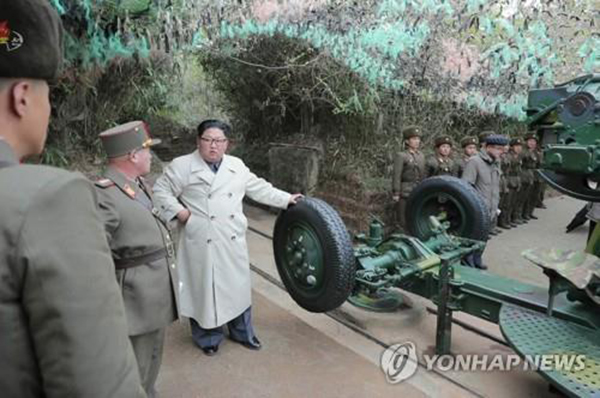South Korea lodged a strong complaint with North Korea over its recent artillery firing drills on an inter-Korean border island in the Yellow Sea, the defense ministry said Tuesday.
The South sent the protest message to the North earlier in the day via the inter-Korean military communication line, ministry spokesperson Choi Hyun-soo said, confirming that the communist country carried out artillery firing drills on Changrin Islet just north of the Northern Limit Line (NLL) on Saturday.
The military authorities also made a verbal protest over the case, Choi added.
Saturday marked the 9th anniversary of North Korea's shelling of the South Korean border island of Yeonpyeong, which killed two Marines and two civilians. The incident on Nov. 23, 2010, was recorded as one of the worst attacks by the North on the South since the 1950-53 Korean War.
According to the North's Korean Central News Agency (KCNA) on Monday, North Korean leader Kim Jong-un gave the firing order during a visit to a military unit on the islet in the Yellow Sea. KCNA did not elaborate on the date of the inspection and other details.
Experts here said the drills appear to have involved the North's 76.2-millimeter coastal guns, which have a range of around 12 kilometers.

"We made it clear that its drills represent a violation of the Sept. 19 inter-Korean military agreement. We strongly urge the North to fully abide by the agreement and stop taking such moves again," the spokesperson said.
North Korea has yet to make any response, she added.

On Sept. 19, 2018, the two Koreas signed the Comprehensive Military Agreement (CMA) during the third summit between South Korean President Moon Jae-in and North Korean leader Kim Jong-un in Pyongyang, which calls for a series of peace-building and tension-reducing measures, such as a halt to all hostile acts against each other.
Under the agreement, Seoul and Pyongyang established ground, maritime and air buffer zones near their boundaries to reduce tensions and prevent accidental clashes. The maritime buffer zone spans around 135 kilometers in the Yellow Sea and around 80 km in the East Sea, and artillery firing and naval drills are to be suspended in the zone.
Changrin is located 45 km southeast of South Korea's border island of Baengnyeong Island, and it is within the maritime buffer zone designated by the pact, according to defense ministry officials.
"We will continue to monitor whether North Korea fully carries out the inter-Korean military pact through reconnaissance operations and other methods," Choi said.
Such military moves came amid a lack of progress in its denuclearization talks with the United States. The North has given the U.S. until the end of the year to put forward a new proposal that could break the deadlock, saying that otherwise it would be compelled to give up on negotiations and choose to take a "new way."

